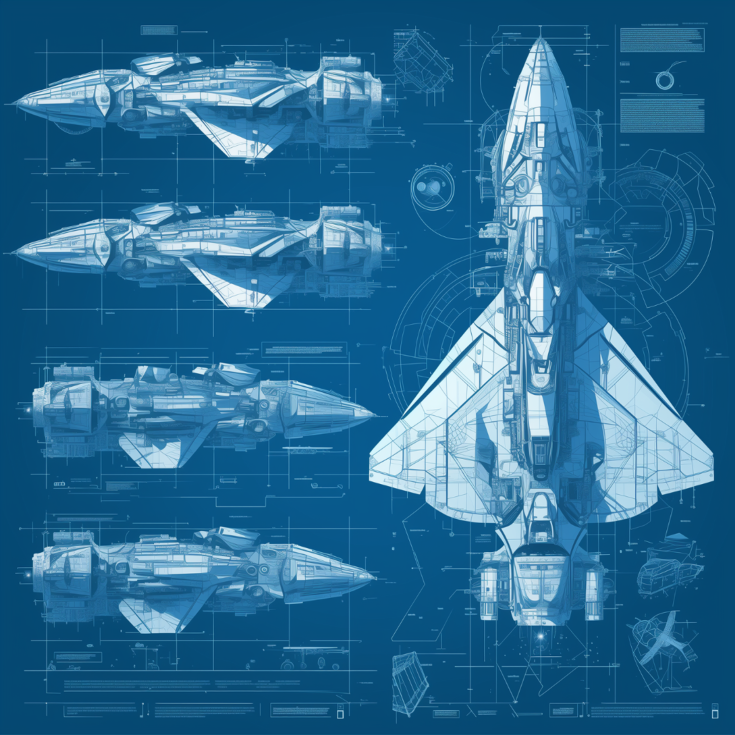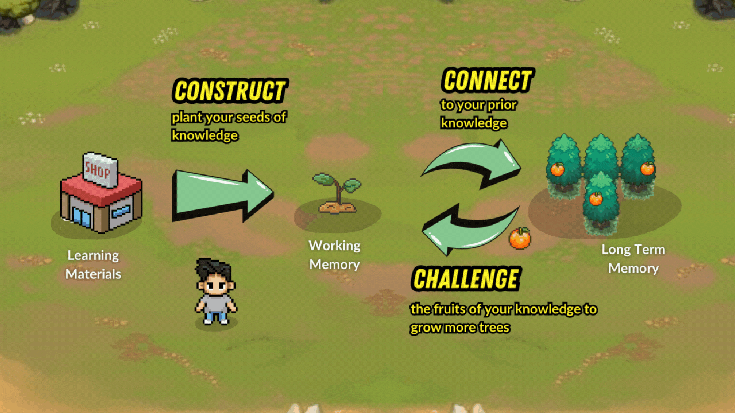
How to Learn Faster Using AI
05.22.2024
This is a comprehensive guide on how to use AI to:
- Learn 2x faster
- Retain your knowledge for longer
- and save loads of time along the way
After all, one of our main goals is to work smarter, not harder. Let’s begin.
How to Get the Most out of AI Learning
AI is only as smart as the person using it.
Beginners will use AI to only look up facts. But that’s what Google is for.
Intermediates will use AI to quiz themselves. This can be helpful, but if the information is not well organized in your mind, then you’re still not getting to the root of the problem.
We want to use AI to build strong knowledge structures in our mind.
In other words, understanding the science behind how the brain learns, will help us understand how to get the most out of AI learning.
And not to worry.
With a decade of experience teaching students and working as a learning coach, I’ve refined this entire process into 3 simple steps to help you learn smarter with AI.
These are the 3 C’s of learning: construct, connect, and challenge.
How to Use AI to Quickly Learn New Information
The Construction Technique
Learning new information is like putting together a fresh new lego set. What is the first thing you do?
- you look at the box to see the finished product looks like. In this case it’s a spaceship.
- then you group all the pieces together: the wings, the windows, and most importantly, the frame of the ship.

What you don’t want to do is dive right in and start fitting random pieces together.
That’s what beginners do.
They try to learn the details first without appreciating the bigger picture.
Instead, use these following prompts to help you construct a mental model or foundation for the new information you’re learning:
Why am I learning this topic?
How would you summarize the importance of this topic in a few sentences?
How will I be tested on this?
How will I use this information in real life?
Instead of collecting and trying to memorize facts, focus on the big picture overview.
The order of what you learn is also important. When learning something new, it’s often more effective to learn the core concepts before diving into the details. After all, what’s the point of building the accessories if you have no frame to put the pieces on?
Here are some example prompts on how to use AI to help you systematically construct a strong foundation for what you’re learning.
Give me a bullet list of the 10 most important concepts to start learning as a complete beginner to the topic of XX. Briefly define each concept and then explain to me why I should learn them in this order.
Act as an expert in XX. create a 14 day syllabus and lesson plan for a complete beginner to get started learning. Give a quick overview about each day and then explain why I should learn the lesson plan in this order.
I am a beginner at XX. I just learned [write in your own words how you understand XX]. What are the next 10 concepts I should learn about? Define each concept and then explain why I should learn them in that order.
Bonus Tip: Construct with real world examples:
A great technique to gather more big picture perspective is to ask AI how what you’re learning is relevant in real life.
If you’re learning about a new disease:
[who are some famous people who have this disease and what was their life like?]
If you’re learning about a complex mathematical formula:
[what are some real world inventions that utilize this mathematical concept?]
How to Use AI to Make Information Stick in Your Brain
The Connection Technique
Knowledge lives in the brain as a network of connections. And when lots of connections are formed it is difficult to break.
This is true for the Lego spaceship you’re trying to build. The center of the ship is well fortified because there are so many connections between the pieces. The outermost parts of the ship, like the wings, will snap easily because there are just fewer Lego pieces and fewer connections.

When we don’t form enough connections, there’s a high chance that we’ll forget that information. The brain will see it as isolated facts and not important, compared to information that is highly connected.
So how do we use AI to form more connections? By asking it to find relationships between ideas.
What is the relationship between concepts X and Y?
How does idea A connect to the broader theme of B we discussed earlier?
And that’s what connection is all about: connecting new information to the prior knowledge we already have.
Try using these prompts:
I’m having trouble understanding the concept of XX and how it relates to [other concepts]. Explain it to me in simple terms and then explain how it relates to these other concepts.
I’m having difficulty understanding XX. Explain it to me in simple terms and provide 3 examples and real-world use cases to help me understand it better.
Create a table to compare and contrast XX, XX, XX. Then explain why the relationship between these concepts is important and how it helps me understand [big picture concept] as a whole.
Bonus Tip: Connect with Analogies and Metaphors
When you ask the AI for an analogy, it will draw connections between the topic you're learning and something familiar, to help you remember it.
Make sure to ask follow-up questions to the AI to flush out these aspects of your analogies:
- Accuracy: Does the analogy accurately capture the key aspects and relationships within the topic?
- Clarity: Does the analogy explain the topic in a way that's easy to understand?
- Relevance: Is the comparison made to something within your own knowledge and experience?
- Limitations: What aspects of the topic does each analogy struggle to capture?

How to Use AI to Retain Everything You Learn
The Challenge Technique
The only way to test whether you know something is to quiz yourself. Challenge your understanding and identify any inaccuracies or weaknesses in your knowledge before facing an exam or real-world application.
So how do you know if you’ve really learned how to build that Lego spaceship? Well, you’d have to disassemble the entire thing and try to build it from scratch.

And this time, you have to build it straight from memory, without relying on the instruction manual.
But not to worry, the AI can help you with that. So close your notes, and get ready to challenge yourself. Use these prompts to test your understanding of what you’ve learned:
You are an expert at XX. Guide me in critically evaluating the strengths and weaknesses of [theory, concept, or argument] related to [topic]?
Help me analyze the implications and potential consequences of [topic] in [specific context].
Provide different perspectives on [topic] and help me develop a well-reasoned argument.
You are an expert at XX. The way I understand XX is this [fill in your understanding]. Critique and provide feedback on the accuracy and strength of my understanding. And where can I be misunderstanding the information?
Bonus Tip: Challenge with AI Generated Practice Tests
Not only can AI help you generate practice tests, but it can also grade your answers for you in real time. And most importantly, it can help you understand why you got the right answers right and why you got the wrong answers wrong (as long as you remember to ask it).
When asking for AI generated practice exams, keep the following in mind:
- Common pitfalls: you can prompt the AI to generate a practice test based on the common pitfalls that students make on a specific topic.
- How would I be tested? Ask the AI to generate a practice test with as much information about yourself as possible.
- What is your education level?
- What class are you taking?
- How would a teacher or test writer ask these questions?
- Scenario-based questions: Ask the AI to simulate real-world situations that push you to apply the knowledge. This helps you avoid simple fact recall and forces you to think more critically about what you know.
To maximize the effectiveness of these practice tests, be sure to try and think through the questions before asking the AI to explain the answers. This cognitive effort that you feel is where the real learning happens.
How to Build a Complete Learning System with AI?
A complete learning system puts all three C’s together:
- Construct: Focus on the big picture and why this topic is important. Without construction, you don’t have a strong foundation to build new knowledge upon.
- Connect: Engage in relational thinking to connect new ideas to what you already know. Without connection, your brain will quickly forget information.
- Challenge: Test your understanding and identify knowledge gaps and weaknesses. Without challenge, you can’t tell if you truly know the information.
Join our newsletter to level up your learning and earning potential